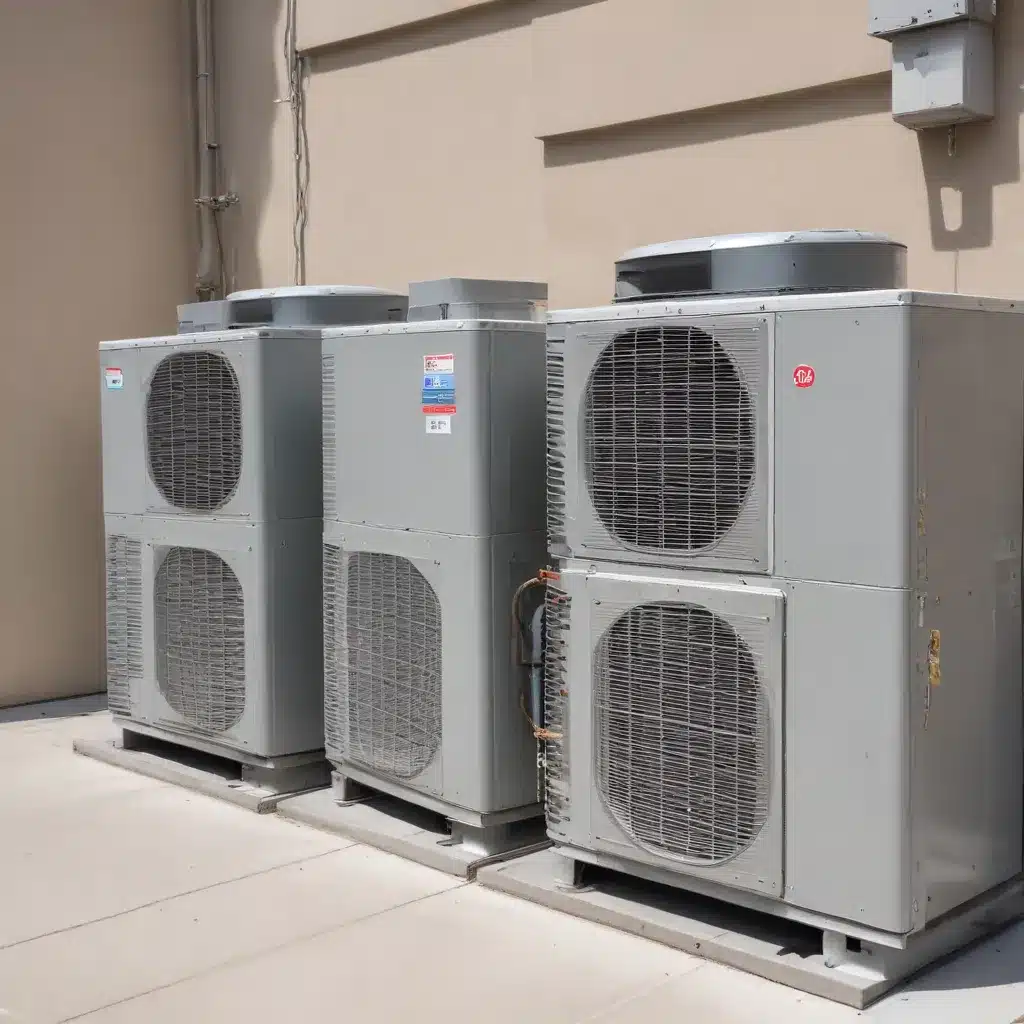
The heating, ventilation, and air conditioning (HVAC) industry is undergoing a transformative shift towards greater sustainability and environmental responsibility. At the heart of this transition lies the evolution of refrigerant technologies, which are crucial for the efficient cooling and heating of buildings. As the world grapples with the pressing challenges of climate change, the HVAC sector is playing a pivotal role in reducing its environmental impact through the adoption of innovative refrigerant solutions.
Refrigerant Technologies
For decades, the HVAC industry has relied on a wide range of refrigerants, each with its own unique properties and environmental considerations. From the early use of ozone-depleting substances like chlorofluorocarbons (CFCs) and hydrochlorofluorocarbons (HCFCs) to the subsequent adoption of hydrofluorocarbons (HFCs), the search for more sustainable alternatives has been an ongoing pursuit.
Ozone-Friendly Alternatives
The Montreal Protocol, a landmark international agreement, paved the way for the phaseout of ozone-depleting refrigerants. This regulatory framework has driven the HVAC industry to explore and adopt alternative refrigerants that are more environmentally friendly. One such class of refrigerants gaining traction is hydrofluoroolefins (HFOs), which offer a significantly lower global warming potential (GWP) compared to their predecessors.
Low-Global Warming Potential Refrigerants
In addition to addressing ozone depletion, the HVAC industry is also focused on reducing the impact of refrigerants on global warming. Refrigerants with high GWP values, such as HFCs, have come under increasing scrutiny due to their significant contribution to climate change. Emerging low-GWP refrigerants, like R-454B, have become the preferred choice, offering a more sustainable solution while maintaining similar cooling performance and energy efficiency.
Natural Refrigerant Solutions
Alongside synthetic refrigerant alternatives, the HVAC industry is also exploring the use of natural refrigerants, such as carbon dioxide (CO₂), ammonia (NH₃), and hydrocarbons. These natural substances have inherently low GWP values and are gaining traction in specialized applications, particularly in the commercial and industrial sectors. The adoption of natural refrigerants, however, often requires specialized equipment and careful handling to ensure safety and optimal performance.
Energy-Efficient HVAC Designs
The pursuit of sustainable HVAC systems extends beyond the choice of refrigerants. Innovative design approaches are also reshaping the industry, focusing on enhancing energy efficiency and reducing the overall environmental impact of HVAC systems.
High-Efficiency Compressors
Advancements in compressor technology have led to the development of high-efficiency models that can significantly improve the energy performance of HVAC systems. These advanced compressors, often featuring variable-speed or inverter-driven designs, can adapt to changing cooling or heating demands, optimizing energy consumption while maintaining desired indoor comfort levels.
Advanced Insulation Materials
The use of highly effective insulation materials, such as advanced foam solutions and high-performance coatings, has become a crucial aspect of sustainable HVAC design. These innovations help to minimize heat transfer, reducing the energy required for heating and cooling, and enhancing the overall system efficiency.
Automated Climate Control Systems
The integration of artificial intelligence (AI) and smart technologies into HVAC systems has revolutionized the way buildings are temperature-regulated. Automated climate control systems can analyze occupancy patterns, weather conditions, and energy usage to dynamically adjust temperature, airflow, and humidity levels, optimizing comfort while minimizing energy consumption.
Renewable Energy Integration
To further enhance the sustainability of HVAC systems, the industry is actively exploring the integration of renewable energy sources, creating a synergistic approach to heating, cooling, and power generation.
Solar-Powered HVAC Systems
The integration of solar photovoltaic (PV) panels with HVAC systems has become an increasingly popular solution. These hybrid systems harness the sun’s energy to power the HVAC equipment, reducing the reliance on grid-supplied electricity and contributing to a more self-sufficient and environmentally friendly building infrastructure.
Geothermal Heat Pump Integration
Geothermal heat pumps have emerged as a highly efficient and renewable option for HVAC systems. By utilizing the stable temperatures of the earth’s subsurface, these systems can provide both heating and cooling with minimal energy consumption, making them a key component of sustainable building design.
Wind-Assisted Ventilation
In some applications, the integration of wind-powered ventilation systems can enhance the energy efficiency of HVAC operations. By leveraging natural airflow, these systems can provide passive cooling and ventilation, reducing the reliance on energy-intensive mechanical cooling.
Regulatory Landscape
The transition towards sustainable HVAC systems is not only driven by environmental concerns but also shaped by a complex web of regulations and compliance requirements. Governments and international organizations are playing a crucial role in guiding the industry towards a more sustainable future.
Refrigerant Phase-Down Policies
Regulations such as the Kigali Amendment to the Montreal Protocol and the United States Environmental Protection Agency’s (EPA) SNAP program have mandated the phasedown of high-GWP refrigerants, pushing the HVAC industry to adopt lower-impact alternatives like R-454B. These policies are designed to mitigate the environmental damage caused by super-polluting refrigerants.
Emissions Reduction Targets
In addition to regulating refrigerants, governments and industry groups have set ambitious targets for reducing greenhouse gas emissions associated with HVAC systems. This includes measures to address refrigerant leaks, improve energy efficiency, and promote the use of renewable energy sources in HVAC applications.
Sustainability Certification Programs
To recognize and incentivize the adoption of sustainable HVAC practices, various certification programs have emerged, such as the LEED (Leadership in Energy and Environmental Design) rating system and the ENERGY STAR® label. These programs provide a framework for assessing and validating the environmental performance of HVAC systems, encouraging industry-wide progress towards more eco-friendly solutions.
As the HVAC industry continues to evolve, the adoption of innovative refrigerant technologies, energy-efficient design approaches, and renewable energy integration is paving the way for a more sustainable future. By staying informed and proactive, HVAC professionals and building owners can navigate this transformative landscape, ensuring that their systems not only meet regulatory requirements but also contribute to a greener, more energy-efficient built environment. Through collaborative efforts and a shared commitment to sustainability, the HVAC industry can play a crucial role in addressing the global challenge of climate change.

